The country’s best smart growth project – the Atlanta Beltline

Posted March 14, 2008 at 6:09PM
I’m a bit fickle about this. At first I was sure the country's best example of smart growth was Atlantic Station, in Atlanta. Then I thought it was one of the iconic transit-oriented developments in the west, The Crossings in Silicon Valley or Orenco Station outside Portland. We featured all three of those in NRDC’s book of smart-growth successes. Then I was really, really sure it was Highlands’ Garden Village, in Denver. Exciting projects, each one.
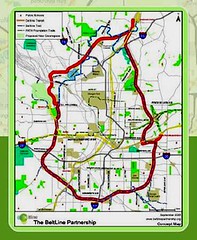
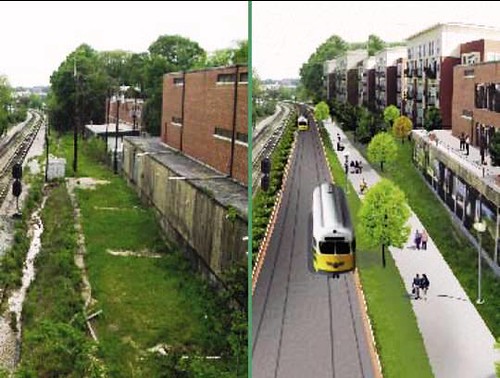
But my heart has been stolen once again. My friends, the best smart growth project I have come across yet is the Atlanta Beltline, an ambitious 22-mile proposed loop around the city’s downtown that will incorporate state-of-the-art transit, new parks and trails, workforce housing, and lots of smart, green neighborhood development, all taking place in the city rather than sprawling out on the fringe. The project takes advantage of an abandoned rail corridor and parcels of other abandoned and/or deteriorated property ripe for redevelopment, and it enjoys the support of nearly all the city’s civic and business leaders.
The Beltline also faces some significant challenges, and I’ll get to those. But first let me tell you about it. In its current state, the corridor largely looks roughly, and I do mean roughly, like this:
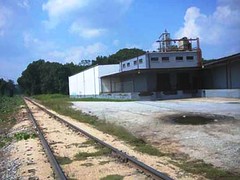
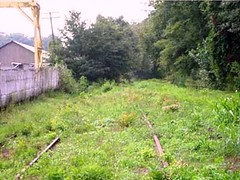

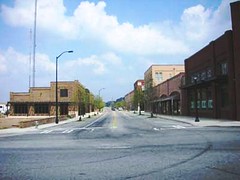
That’s abandoned industrial property, scrub land, a neighborhood needing a lift and, this being Georgia, lots of kudzu.
The Beltline has a short but rich history. Amazingly, credit for the project’s inspiration is given to a master’s thesis written in 1999 by Ryan Gravel, at the time a student at Georgia Tech. Gravel sent copies to various influential Atlantans and began to advocate the Beltline concept in earnest. By 2003-2004, the project’s enthusiastic supporters included Mayor Shirley Franklin and former city council president Cathy Woolard, and the project was formally approved by the city council, board of education, and Fulton County Commission.
One particularly instrumental leadership role was taken by the Trust for Public Land (my favorite conservation group), which undertook a study of existing and potential park space around the Beltline, releasing the influential report The Beltline Emerald Necklace. (Let’s forgive the mixed-metaphor title, shall we?) A result is that the Beltline will create an interconnected system of 40 new and existing parks, adding over 1,200 acres of new green space for residents to use and enjoy.

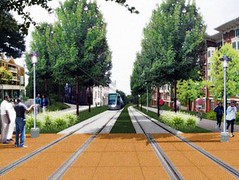
The city’s detailed, comprehensive plan for the Atlanta Beltline includes the following:
- Parks—over 1,200 acres of new or expanded parks, as well as improvements to over 700 acres of existing parks;
- Trails—33 miles of continuous trails connecting 40 parks, including 11 miles connecting to parks not adjacent to the Beltline;
- Transit—22-mile transit system (streetcars or light rail) connecting to the larger regional transit network, including the MARTA rail transit system;
- Jobs—more than 30,000 permanent jobs and 48,000 year-long construction jobs;
- Workforce housing—5,600 new workforce housing units;
- Streets—new and renovated streets and intersections including 31 miles of new streetscapes connecting neighborhoods and parks to the Beltline;
- Environmental remediation—cleanup of contaminated sites;
- Neighborhood preservation—preservation of existing single-family neighborhoods;
- Tax base—an estimated $20 billion increase in tax base over 25 years; and
- Industrial base—preservation of viable light industry.
(More history here, and a frequently updated blog here.)
The challenge is assembling the necessary funding. The overall budget for public investment is $2.8 billion. But the city had been planning to raise a little less than a third of the total by issuing bonds that would be repaid from increased property tax revenue due to increased property values. But the problem is that such revenues usually go to schools. In this case, the school board approved the plan because they saw the investment as increasing revenues available to schools in the long run. But last month the Georgia Supreme Court agreed with a sole taxpayer that the financing scheme was unconstitutional. Because the implications of the court decision go beyond the Beltline and threaten many other initiatives around the state, city leaders are hopeful that a legislative remedy can be found. In any event, they are fully committed to the project and vow that, one way or another, they will find the money.
If they do, the citizens of Atlanta will be able to enjoy the country’s best smart growth project.